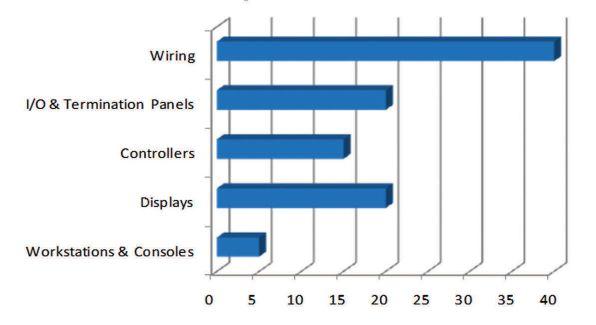INSIGHTS
NEWS
Researchers designing wearable The Occupational Safety and Health Administration (OSHA) said one in 10 construction site workers is injured every year, and 21% of worker fatalities are in construction. Aiming to improve worker safety and efficiency, LSU and Rutgers University researchers hope to develop an integrated, multidisciplinary approach to bring emerging robotic technologies, such as a wearable exoskeleton, to the construction industry to save lives and time. The researchers received a $150,000 planning grant from the National Science Foundation to develop an exoskeleton. The award gives LSU and Rutgers one year to create a team of researchers to compete for a $3 million research grant in March. So far, their project is ahead of the game since there are few, if any, construction companies that have actually adopted exoskeleton technology. Exoskeleton project goals: This FW-
HTF project has three goals – to develop lightweight, flexible, high-performance, personalized wearable exoskeletons for construction workers; develop machine learning-based human skill modeling and training in construction; and initiate new cross-disciplinary collaboration and foster engagement with industry partners and stakeholders. “Construction workers get hurt for three reasons,” said Fereydoun Aghazadeh, an LSU professor of engineering. “Number one, they are tired. Number two, the task is beyond their capacity. Number three, they are not properly trained. If they don’t have the capacity to do the physical work, how can we enhance their physical capability? We can give them more power. This project is all about that.” Wang, who serves as the project’s principal investigator, says there are a few exoskeleton products currently available on
the market, but they mainly target the industrial/manufacturing setting. The exoskeleton is still a new concept in construction because the construction site is more dynamic and complicated. “We’re seeing how we can explore personalized exoskeleton or robotics technology,” said Chao Wang, an assistant professor at LSU. “In a manufacturing facility, a worker probably does the same thing 1,000 times a day. It’s repetitive, which is perfect for an exoskeleton because they design it just for that one task. A construction site is a lot different. You must be able to climb stairs, walk, squat, and reach out to different levels depending on what trade you are in. “That makes it difficult to design an exoskeleton because you need something that can help with all of these tasks. We are investigating how to make the exoskeleton smart enough to recognize what
Stretchable sensor gives robots, VR a human touch RESEARCHERS at Cornell University have created a
complicated, combinational way, and there are a lot of
deformations happening at the same time,” Bai said. “We fiber-optic sensor that combines low-cost LEDs and dyes, wanted a sensor that could decouple these.” resulting in a stretchable “skin” that detects deformations Bai’s solution was to make a stretchable lightguide for such as pressure, bending and strain. This sensor could multimodal sensing (SLIMS). This long tube contains a pair give soft robotic systems – and anyone using augmented reality technology – the ability to feel the same rich, tactile of polyurethane elastomeric cores. One core is transparent; the other is filled with absorbsensations that mammals depend ing dyes at multiple locations and on to navigate the natural world. connects to an LED. Each core The sensor can detect The researchers are working is coupled with a red-green-blue to commercialize the technology pressure, bending or elongation sensor chip to register geometric for physical therapy and sports changes in the light’s path. medicine. A 2016 stretchable senby lighting up the dyes, which The dual-core design increases sor sent light through an optithe number of outputs by which cal waveguide, and a photodiode act as spatial encoders. the sensor can detect defordetected changes in the beam’s mations (pressure, bending or intensity to determine when the elongation) by lighting up the dyes, which act as spatial material was deformed. The lab also made sensors using encoders. Bai paired that technology with a mathematical optical lace and foams. model that can decouple different deformations and pinDoctoral student Hedan Bai drew inspiration from silicapoint locations and magnitudes. Sensors are wearable and based distributed fiber-optic sensors, which detect minor may boost virtual and augmented reality experiences. ce wavelength shifts as a way to identify multiple properties,
‘
’
such as changes in humidity, temperature and strain. Silica fibers aren’t compatible with soft and stretchable electronics. Intelligent soft systems present structural challenges. “We know that soft matters can be deformed in a very
12
•
December 2020
control engineering
David Nutt, Cornell University. Edited by Chris Vavra, associate editor, Control Engineering, CFE Media and Technology, cvavra@cfemedia.com.
www.controleng.com





